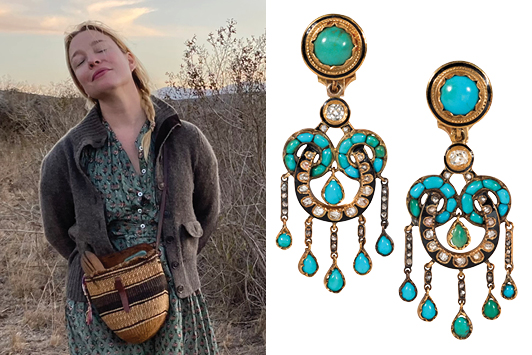 What makes fringe jewelry so timeless?
What makes fringe jewelry so timeless?
You can find iterations of fringe jewelry in almost every historical period of jewelry. It offers a wonderful opportunity for jewelers to highlight gemstones and convey a sense of playfulness.
The most archetypical example will always be the necklace, which in our collection runs the gamut from Victorian all the way through mid-century modern. In the trade, when we say a fringe necklace, it most often refers to a style that became especially popular during the Victorian era. The term can be used to describe everything from a bib of graduated and articulated diamond pendants, to a smaller style such as those found in the Edwardian era, rendered with plain gold pendants, where the effect is more of a petite collar.
Additionally, there are items with fringe motifs such as tassels. One can often find tassel or fringe motifs in later Victorian and French designs in the late 1800s. Goldsmiths had made huge advancements in the technical sphere and were creating fabric-like fringed tassels out of gold wheat chain. After the turn of the century, during the Edwardian and Art Deco eras, you start to see fringe tassels rendered in beads or diamond chain. In the Retro period, bold, bib-like collars in two-color gold come into fashion. Mid-century, those collars get even bigger in scale and feature colored gemstones and diamonds.
What keeps these pieces relevant?
The fringe style delights because of its articulated movement. It is a timeless motif that jewelers today continue to use as a statement theme, as particularly in the case of necklaces, it can take up a lot of real estate on the neck while still imparting an airy, weightless quality. Necklaces can be worn on bare skin or over a turtleneck to really pop. It’s important that the fringe lies nicely, with no kinks or breaks, on the collar bone at the correct angle and doesn’t jut out.
Are there any specific designers that stand out?
For me, the Archeological Revival jewels from the workshop of Castellani are the quintessential examples of neoclassical fringe styling. The house created numerous pieces that incorporated micromosaic and gold amphorae fringe. Castellani pieces are very rare and can be found in every major museum with a jewelry collection. They are avidly sought by collectors and toe a fascinating line between ancient and contemporary styles.
Have you seen any unexpected interpretations?
The style is endlessly reinvented, but I also think some very interesting interpretations of asymmetrical fringe were done by Pierre Sterlé, who created fascinating, playful pieces with rope-twist gold and diamond fringe that have such an elegant sensibility. Many of these designs achieve such a realistic, fabric-like drape that they’re a delight to wear and touch for the owner as well as the beholder — a real tactile pleasure.
What do you look for when stocking fringe jewelry?
We love to feature wearable fringe styles in our collection that skew toward bohemian and unfussy, with clean lines and gemstone pendant fringe. Simple gold fringe necklaces are always an in-demand, elegant statement as well; [they] can be worn to pull a look together and create an interesting focal point.
Images: Kentshire GalleriesArticle from the Rapaport Magazine - October 2022. To subscribe click here.